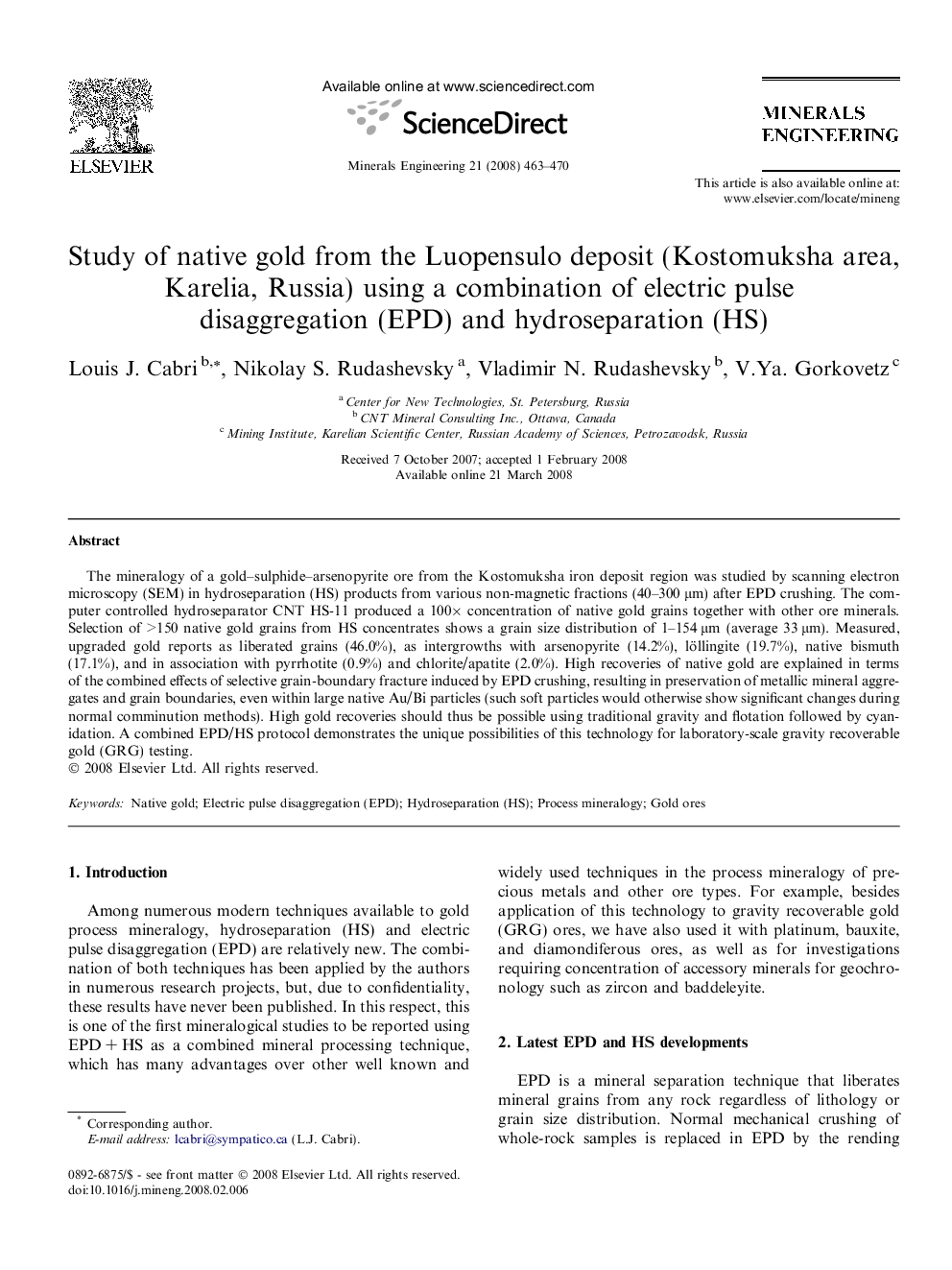| کد مقاله | کد نشریه | سال انتشار | مقاله انگلیسی | نسخه تمام متن |
|---|---|---|---|---|
| 234318 | 465401 | 2008 | 8 صفحه PDF | دانلود رایگان |

The mineralogy of a gold–sulphide–arsenopyrite ore from the Kostomuksha iron deposit region was studied by scanning electron microscopy (SEM) in hydroseparation (HS) products from various non-magnetic fractions (40–300 μm) after EPD crushing. The computer controlled hydroseparator CNT HS-11 produced a 100× concentration of native gold grains together with other ore minerals. Selection of >150 native gold grains from HS concentrates shows a grain size distribution of 1–154 μm (average 33 μm). Measured, upgraded gold reports as liberated grains (46.0%), as intergrowths with arsenopyrite (14.2%), löllingite (19.7%), native bismuth (17.1%), and in association with pyrrhotite (0.9%) and chlorite/apatite (2.0%). High recoveries of native gold are explained in terms of the combined effects of selective grain-boundary fracture induced by EPD crushing, resulting in preservation of metallic mineral aggregates and grain boundaries, even within large native Au/Bi particles (such soft particles would otherwise show significant changes during normal comminution methods). High gold recoveries should thus be possible using traditional gravity and flotation followed by cyanidation. A combined EPD/HS protocol demonstrates the unique possibilities of this technology for laboratory-scale gravity recoverable gold (GRG) testing.
Journal: Minerals Engineering - Volume 21, Issue 6, May 2008, Pages 463–470